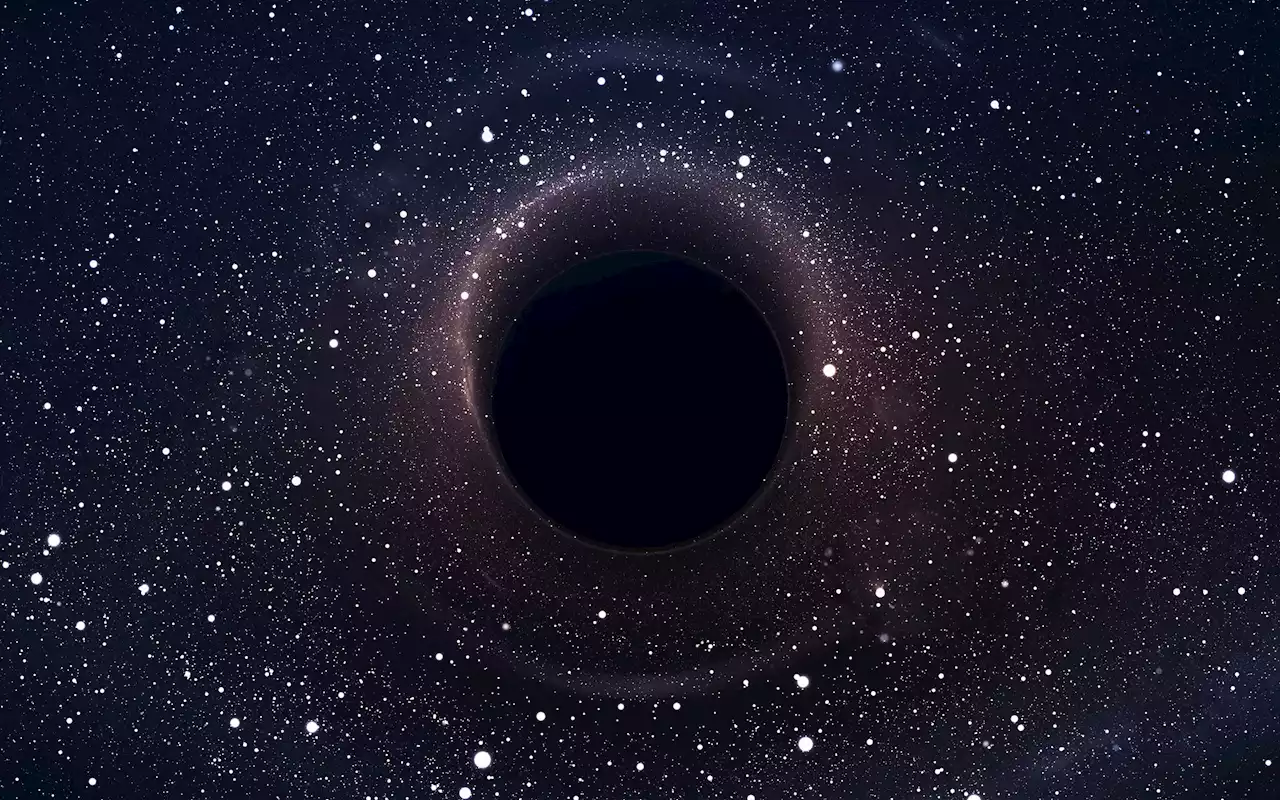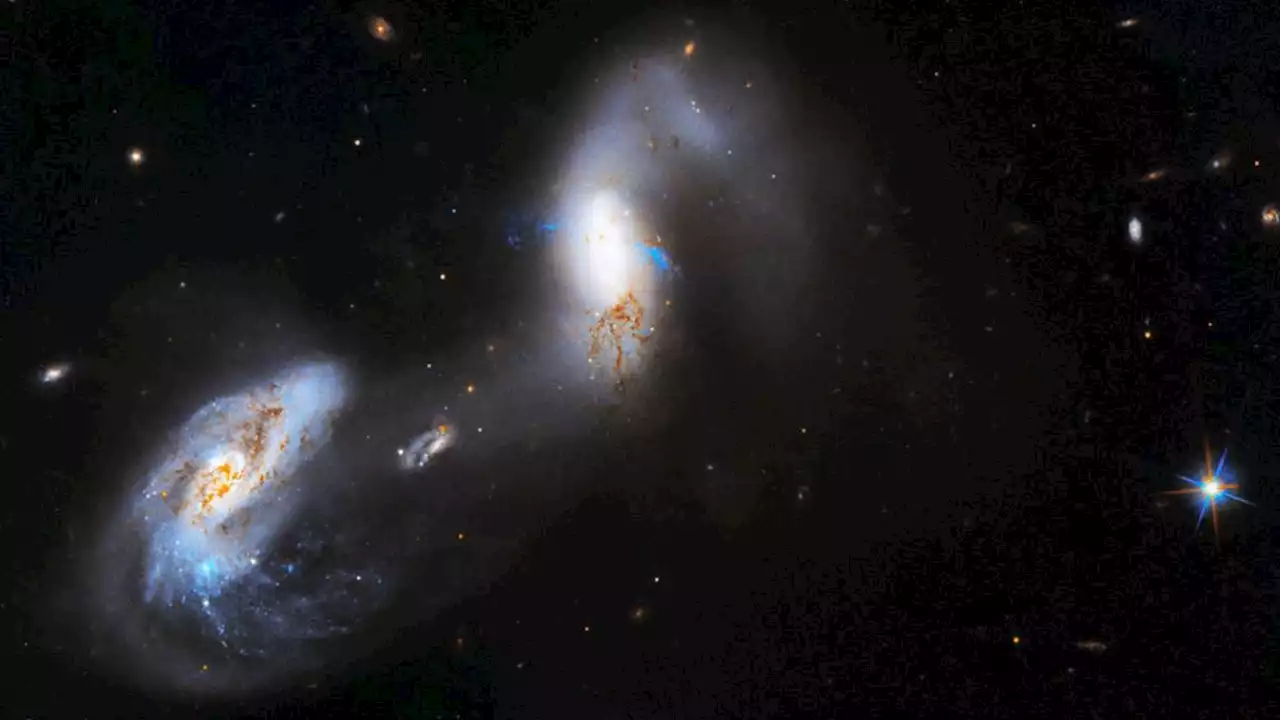A new animation shows how these cosmic monsters compare to other cosmic objects, and to each other.
, and the first black hole ever imaged by humanity, the black hole at the core of the galaxy Messier 87 . The sizes of the supermassive black holes in the animation are scaled up based on the width of their"shadows." , which is the point at which not even light can escape the black hole's tremendous gravitational pull. The diameter of the event horizon is determined by the mass of the black hole; more mass means a wider black hole.
The animation begins at our sun, which is the most massive object in the solar system, accounting for 99% of its mass. Our view then pulls back to gradually reveal increasingly wider structures in the solar system, such as the orbits of planets like Mercury, Earth andand the distance to features like the main asteroid belt and the Oort Cloud, a vast comet repository far from the sun. The animation compares these widths to supermassive black hole shadows of increasing size.
The first supermassive black hole featured is that of the dwarf galaxy J1601+3113, with a mass about 100,000 times that ofThe animation also highlights Sgr A*, which has a mass 4.3 million times that of the sun and a shadow with a diameter around half the distance between Mercury and the sun. Pulling out further, the animation passes the two massive black holes located in the galaxy NGC 7727.
About 1,600 light-years separates these two black holes, which have masses 6 million and 150 million times that of the sun, respectively. The distance between the two behemoths is declining all the time, however, and astronomers estimate that, within 250 million years or so, the two black holes will merge, forming an even more massive daughter black hole.
Collisions like this could be the key to understanding how supermassive black holes grow. Such mergers cause ripples in space-time called gravitational waves, which detectors here on Earth such as the
Indonesia Berita Terbaru, Indonesia Berita utama
Similar News:Anda juga dapat membaca berita serupa dengan ini yang kami kumpulkan dari sumber berita lain.
 See the enormous scale of black holes in this jaw-dropping NASA animationA new black hole animation from NASA helps showcase the scale and size of the biggest black holes in our universe.
See the enormous scale of black holes in this jaw-dropping NASA animationA new black hole animation from NASA helps showcase the scale and size of the biggest black holes in our universe.
Baca lebih lajut »
 NASA shares stunning deep space images for Black Hole Week 2023With so much exciting content, you'll want to dive right in to the singularity that is NASA's Black Hole Week.
NASA shares stunning deep space images for Black Hole Week 2023With so much exciting content, you'll want to dive right in to the singularity that is NASA's Black Hole Week.
Baca lebih lajut »
 NASA Selects 12 Companies to Innovate on Key Moon and Mars TechnologyNASA has chosen 16 projects from 12 U.S. companies to push forward capabilities for Moon and Mars missions. The projects will focus on developing a lunar rover tire, a robotically assembled power system, and an in-space propellant transfer device. The companies will utilize NASA's facilities and exp
NASA Selects 12 Companies to Innovate on Key Moon and Mars TechnologyNASA has chosen 16 projects from 12 U.S. companies to push forward capabilities for Moon and Mars missions. The projects will focus on developing a lunar rover tire, a robotically assembled power system, and an in-space propellant transfer device. The companies will utilize NASA's facilities and exp
Baca lebih lajut »
 Cremated Remains of NASA Astronaut Recovered After Failed Rocket LaunchA small rocket carrying ashes for a suborbital memorial service blew up seconds after launch, but the company claims the precious payload managed to survive.
Cremated Remains of NASA Astronaut Recovered After Failed Rocket LaunchA small rocket carrying ashes for a suborbital memorial service blew up seconds after launch, but the company claims the precious payload managed to survive.
Baca lebih lajut »
A space station fell to Earth. An Australian boy brought it to San FranciscoIn 1979 NASA’s abandoned space station, Skylab, was about to fall back down to the Earth, and no one knew where it might land.
Baca lebih lajut »
 New book reveals NASA photographer's unseen Mercury astronaut archives'The Taub collection revealed more images from Mercury than I could ever have imagined.'
New book reveals NASA photographer's unseen Mercury astronaut archives'The Taub collection revealed more images from Mercury than I could ever have imagined.'
Baca lebih lajut »
